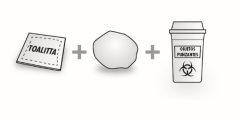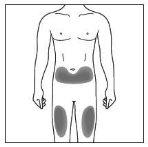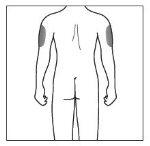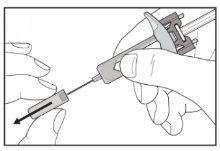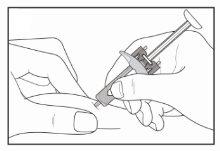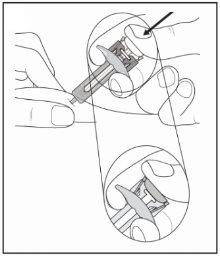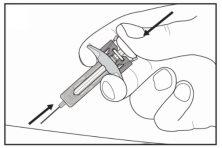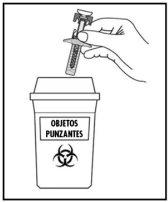
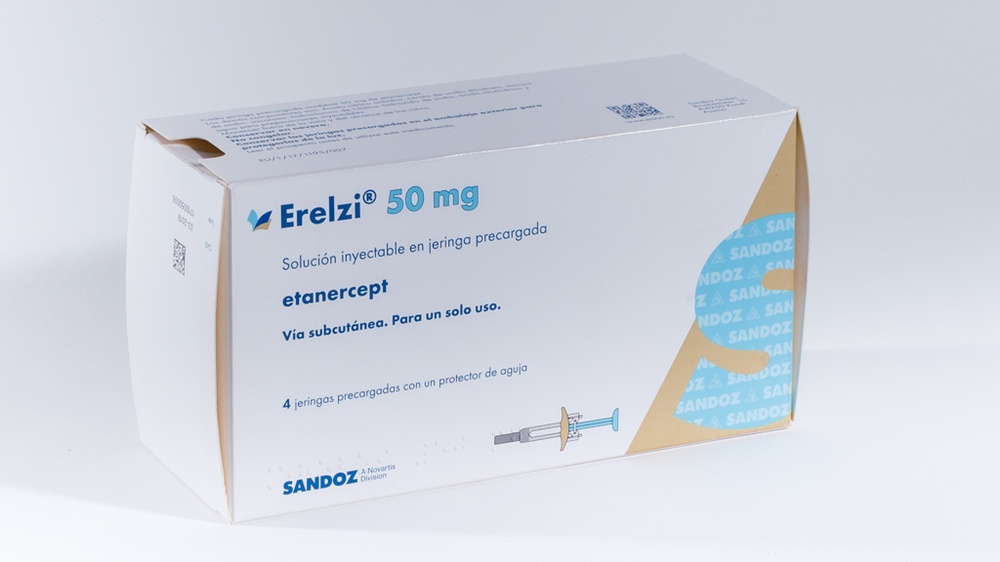
ЕРЕЛЬЗІ 50 мг РОЗЧИН ДЛЯ ІН'ЄКЦІЙ У ПЕРЕДНАПОВНЕНИХ ШПРИЦАХ


Інструкція із застосування ЕРЕЛЬЗІ 50 мг РОЗЧИН ДЛЯ ІН'ЄКЦІЙ У ПЕРЕДНАПОВНЕНИХ ШПРИЦАХ
Введення
Про сприймача: інформація для користувача
Erelzi 25мг розчин для ін'єкцій у попередньо заповненому шприці
Erelzi 50мг розчин для ін'єкцій у попередньо заповненому шприці
етанерцепт
Перш ніж почати використовувати цей лікарський засіб, уважно прочитайте весь листок із інформацією, оскільки він містить важливу інформацію для вас.
- Збережіть цей листок, оскільки вам може знадобитися знову його прочитати.
- Ваш лікар, крім того, дасть вам Карточку інформації для пацієнта, яка містить важливу інформацію про безпеку, яку вам потрібно знати до та під час лікування Erelzi.
- Якщо у вас є якісь сумніви, проконсультуйтеся з вашим лікарем, фармацевтом або медсестрою.
- Цей лікарський засіб призначений лише для вас або дитини, яка знаходиться під вашим піклуванням, і не слід давати його іншим людям, навіть якщо вони мають такі самі симптоми, як у вас або дитини, оскільки це може їм нашкодити.
- Якщо ви відчуваєте побічні ефекти, проконсультуйтеся з вашим лікарем або фармацевтом, навіть якщо це побічні ефекти, які не вказані в цьому листку. Див. розділ 4.
Зміст листка із інформацією:
- Що таке Erelzi і для чого він використовується
- Що вам потрібно знати до початку використання Erelzi
- Як використовувати Erelzi
- Можливі побічні ефекти
- Зберігання Erelzi
- Зміст упаковки та додаткова інформація
- Інструкції з використання попередньо заповненого шприця Erelzi
1. Що таке Erelzi і для чого він використовується
Erelzi - це лікарський засіб, який виготовляється з двох білків людини. Він блокує дію іншого білка, який знаходиться в організмі, і який викликає запалення. Erelzi діє шляхом зменшення запалення, пов'язаного з певними захворюваннями.
Erelzi можна використовувати у дорослих віком 18 років і старших для лікування середньої або тяжкої ревматоїдного артриту, псоріатичного артриту, важкого аксіального спондилоартриту, включаючи анкілозуючий спондилоартрит, та псоріазу середньої або тяжкої форми, зазвичай залежно від кожного випадку, коли інші методи лікування не були достатньо ефективними або не підходять для вас.
При лікуванні ревматоїдного артриту Erelzi зазвичай використовується в поєднанні з метотрексатом, хоча також може використовуватися як єдиний лікарський засіб у випадку, коли лікування метотрексатом не підходить для вас. Erelzi може сповільнити пошкодження, викликане ревматоїдним артритом, у ваших суглобах і покращити вашу здатність виконувати щоденні дії, як самостійно, так і в поєднанні з метотрексатом.
У випадку пацієнтів з псоріатичним артритом з множинним ураженням суглобів Erelzi може покращити вашу здатність виконувати щоденні дії.
У випадку пацієнтів з множинними симетричними ураженнями суглобів, які є опухлими або болючими (наприклад, у руках, зап'ястках і ногах), Erelzi може сповільнити прогресування пошкодження суглобів, викликане захворюванням.
Erelzi також показаний для лікування дітей і підлітків з такими захворюваннями:
- Для наступних типів ювенільного ідіопатичного артриту, коли лікування метотрексатом не було достатньо ефективним або не підходило для них:
- Поліартрит (з позитивним або негативним ревматоїдним фактором) і розширений олігоартрит у пацієнтів віком від 2 років і з масою тіла 62,5 кг або більше.
- Псоріатичний артрит у пацієнтів віком від 12 років і з масою тіла 62,5 кг або більше.
- Для артриту, пов'язаного з ентезитом, у пацієнтів віком від 12 років і з масою тіла 62,5 кг або більше, у яких використання інших методів лікування не було достатньо ефективним або не підходило для них.
- Важкий псоріаз у пацієнтів віком від 6 років і з масою тіла 62,5 кг або більше, які мали недостатню реакцію на фототерапію або інші системні методи лікування.
2. Що вам потрібно знати до початку використання Erelzi
Не використовувати Erelzi
- якщо ви або дитина, яка знаходиться під вашим піклуванням, алергічні на етанерцепт або на будь-який інший компонент Erelzi (перелічені в розділі 6). Якщо ви або дитина відчуваєте алергічні реакції, такі як стиснення грудної клітки, задишка, головокружіння або висип, не вводьте більше Erelzi і негайно проконсультуйтеся з вашим лікарем.
- якщо ви або дитина маєте або маєте ризик розвитку важкої інфекції крові, такої як сепсис. Якщо ви не впевнені, проконсультуйтеся з вашим лікарем.
- якщо ви або дитина маєте будь-яку інфекцію. Якщо ви не впевнені, проконсультуйтеся з вашим лікарем.
Попередження та застереження
Проконсультуйтеся з вашим лікарем до початку використання Erelzi.
- Алергічні реакції: якщо ви або дитина відчуваєте алергічні реакції, такі як стиснення грудної клітки, задишка, головокружіння або висип, не вводьте більше Erelzi і негайно проконсультуйтеся з вашим лікарем.
- Інфекції/хірургія: якщо ви або дитина розвиваєте нову інфекцію або маєте намір пройти велику хірургічну операцію, ваш лікар може захотіти контролювати лікування Erelzi.
- Інфекції/цукровий діабет: повідомте вашому лікареві, якщо ви або дитина маєте історію повторюваних інфекцій або якщо ви маєте цукровий діабет або інші розлади, які збільшують ризик інфекції.
- Інфекції/моніторинг: повідомте вашому лікареві про будь-які недавні поїздки поза Європою. Якщо ви або дитина розвиваєте симптоми інфекції, такі як гарячка, озноб або кашель, негайно повідомте вашому лікареві. Ваш лікар повинен вирішити, чи продовжувати моніторинг вас або дитини на наявність інфекції після припинення лікування Erelzi.
- Туберкульоз: оскільки були повідомлення про випадки туберкульозу у пацієнтів, які приймали Erelzi, ваш лікар огляне ознаки та симптоми туберкульозу до початку лікування Erelzi. Це може включати детальний медичний огляд, рентгенографію грудної клітки та тест на туберкульоз. Виконання цих аналізів повинно бути зареєстровано в Карточці інформації для пацієнта. Дуже важливо, щоб ви повідомили вашому лікареві, якщо ви або дитина мали туберкульоз або були в безпосередньому контакті з людиною, яка мала туберкульоз. Якщо симптоми туберкульозу (такі як тривала кашель, вагова недостатність, апатія, помірна гарячка) або будь-яка інша інфекція з'являються під час або після лікування, негайно повідомте вашому лікареві.
- Гепатит Б: повідомте вашому лікареві, якщо ви або дитина мали гепатит Б будь-коли. Ваш лікар повинен провести тест на гепатит Б до початку лікування Erelzi. Лікування Erelzi може реактивувати гепатит Б у пацієнтів, які раніше були інфіковані вірусом гепатиту Б. Якщо це відбувається, ви повинні припинити використання Erelzi.
- Гепатит С: повідомте вашому лікареві, якщо ви або дитина маєте гепатит С. Ваш лікар може захотіти контролювати лікування Erelzi у разі погіршення інфекції.
- Розлади крові: негайно повідомте вашому лікареві, якщо ви або дитина маєте ознаки або симптоми, такі як тривала гарячка, біль у горлі, синяки, кровотеча або блідість. Такі симптоми можуть вказувати на наявність важкого проблем з кров'ю, які вимагають припинення лікування Erelzi.
- Розлади нервової системи та зору: повідомте вашому лікареві, якщо ви або дитина маєте множинну склероз, неврит оптичного нерва (запалення зорових нервів) або трансверсальний мієліт (запалення спинного мозку). Ваш лікар вирішить, чи підходить Erelzi для лікування.
- Серцева недостатність: повідомте вашому лікареві, якщо ви або дитина маєте історію серцевої недостатності, оскільки Erelzi потрібно використовувати з обережністю в таких випадках.
- Рак: повідомте вашому лікареві, якщо ви маєте або мали лімфому (тип кров'яного раку) або будь-який інший рак до початку лікування Erelzi.
Пацієнти з важким ревматоїдним артритом, які мали захворювання протягом тривалого часу, можуть мати більший ризик розвитку лімфоми, ніж середній.
Діти та дорослі, які приймають Erelzi, можуть мати підвищений ризик розвитку лімфоми або іншого раку.
Деякі підлітки та діти, які приймали Erelzi або інші лікарські засоби, які діють аналогічно до Erelzi, мали рак, включаючи рідкісні типи, які іноді призводили до смерті.
Деякі пацієнти, які приймали Erelzi, мали рак шкіри. Повідомте вашому лікареві, якщо ви або дитина маєте будь-які зміни на шкірі або нові утворення.
- Вітрянка: повідомте вашому лікареві, якщо ви або дитина були в контакті з вітрянкою під час лікування Erelzi. Ваш лікар вирішить, чи потрібно профілактичне лікування вітрянки.
- Алкоголізм: Erelzi не повинен використовуватися для лікування гепатиту, пов'язаного з алкоголізмом. Будь ласка, повідомте вашому лікареві, якщо ви або дитина, яка знаходиться під вашим піклуванням, маєте історію алкоголізму.
- Гранулематоз Вегенера: не рекомендується використовувати Erelzi для лікування гранулематозу Вегенера, рідкого запального захворювання. Якщо ви або дитина, яка знаходиться під вашим піклуванням, маєте гранулематоз Вегенера, обговоріть це з вашим лікарем.
- Протидіабетичні лікарські засоби: повідомте вашому лікареві, якщо ви або дитина маєте цукровий діабет або приймаєте лікарські засоби для лікування цукрового діабету. Ваш лікар може вирішити, чи потрібно зменшити дозу протидіабетичного лікарського засобу під час лікування Erelzi.
Діти та підлітки
Використання Erelzi не показане у дітей та підлітків з масою тіла менше 62,5 кг.
- Вакцинація: якщо це можливо, діти повинні мати всі необхідні вакцини до початку лікування Erelzi. Деякі вакцини, такі як оральна вакцина проти поліомієліту, не повинні вводитися під час лікування Erelzi. Проконсультуйтеся з вашим лікарем до початку використання будь-якої вакцини.
Зазвичай Erelzi не повинен використовуватися у дітей молодших 2 років або з масою тіла менше 62,5 кг з поліартритом або розширеним олігоартритом, у дітей молодших 12 років або з масою тіла менше 62,5 кг з артритом, пов'язаним з ентезитом, або псоріатичним артритом, а також у дітей молодших 6 років або з масою тіла менше 62,5 кг з псоріазом.
Інші лікарські засоби та Erelzi
Повідомте вашому лікареві або фармацевту, якщо ви або дитина приймаєте, нещодавно приймали або можете приймати будь-який інший лікарський засіб (включаючи анакінру, абатацепт або сульфасалазин), навіть якщо він не призначений вашим лікарем.
Ви або дитина не повинні використовуватиErelzi разом з лікарськими засобами, які містять активні речовини анакінру або абатацепт.
Вагітність та лактація
Erelzi повинен використовуватися під час вагітності лише у разі явної необхідності. Проконсультуйтеся з вашим лікарем, якщо ви вагітні, думаєте, що можете бути вагітною або плануєте вагітність.
Якщо ви приймали Erelzi під час вагітності, ваша дитина може мати підвищений ризик інфекції. Крім того, у одному дослідженні було виявлено більше вад розвитку при прийомі етанерцепту під час вагітності порівняно з матерями, які не приймали етанерцепт або інші подібні лікарські засоби (антагоністи фактору некрозу пухлини), але не було виявлено жодного шаблону вад розвитку. Інше дослідження не виявило підвищеного ризику вад розвитку при прийомі Erelzi під час вагітності. Ваш лікар допоможе вам вирішити, чи переважують користі лікування потенційний ризик для вашої дитини.
Проконсультуйтеся з вашим лікарем, якщо ви хочете годувати грудьми під час лікування Erelzi. Важливо повідомити вашому педіатру та іншим медичним працівникам про використання Erelzi під час вагітності та лактації до того, як ваша дитина отримає будь-яку вакцину.
Водіння транспортних засобів та використання машин
Не очікується, що використання Erelzi вплине на вашу здатність водити транспортні засоби та використовувати машини.
Erelzi містить натрій
Цей лікарський засіб містить менше 1 ммоль натрію (23 мг) на 25 мг або 50 мг; тобто, він практично "не містить натрію".
3. Як використовувати Erelzi
Слідуйте точно інструкціям з використання цього лікарського засобу, вказаним вашим лікарем. У разі сумнівів проконсультуйтеся з вашим лікарем або фармацевтом знову.
Якщо ви вважаєте, що дія Erelzi надто сильна або слабка, повідомте вашому лікареві або фармацевту.
Erelzi доступний у вигляді 25 мг та 50 мг.
Використання у дорослих пацієнтів (віком 18 років і старших)
Ревматоїдний артрит, псоріатичний артрит та аксіальний спондилоартрит, включаючи анкілозуючий спондилоартрит
Звичайна доза становить 25 мг, вводиться двічі на тиждень, або 50 мг, вводиться один раз на тиждень, у вигляді ін'єкції під шкіру. Однак ваш лікар може вирішити використовувати іншу частоту введення Erelzi.
Псоріаз у плаці
Звичайна доза становить 25 мг двічі на тиждень або 50 мг один раз на тиждень.
Альтернативно, можуть вводитися 50 мг двічі на тиждень протягом максимально 12 тижнів, після чого вводяться 25 мг двічі на тиждень або 50 мг один раз на тиждень.
Ваш лікар вирішить, як довго вам потрібно використовувати Erelzi та чи потрібно повторення лікування залежно від вашої реакції. Якщо Erelzi не має ефекту на ваше захворювання після 12 тижнів, ваш лікар може рекомендувати припинити використання цього лікарського засобу.
Використання у дітей та підлітків
Адекватна доза та частота введення залежать від маси тіла та захворювання дитини або підлітка. Ваш лікар вирішить адекватну дозу для дитини та призначить найбільш підходящу форму Erelzi. Пацієнтам-педіатрам з масою тіла 62,5 кг або більше можна призначити дозу 25 мг двічі на тиждень або 50 мг один раз на тиждень за допомогою попередньо заповненого шприця або плаштучки з фіксованою дозою.
Існують інші лікарські засоби етанерцепту з дозами, підходящими для дітей.
Для поліартриту або розширеного олігоартриту у пацієнтів віком від 2 років та з масою тіла 62,5 кг або більше, або артриту, пов'язаного з ентезитом, або псоріатичного артриту у пацієнтів віком від 12 років та з масою тіла 62,5 кг або більше, звичайна доза становить 25 мг двічі на тиждень або 50 мг один раз на тиждень.
Для псоріазу у пацієнтів віком від 6 років та з масою тіла 62,5 кг або більше звичайна доза становить 50 мг один раз на тиждень. Якщо Erelzi не має ефекту на захворювання дитини після 12 тижнів, ваш лікар може рекомендувати припинити використання цього лікарського засобу.
Ваш лікар дасть вам точні інструкції щодо підготовки та розрахунку правильної дози.
Форма та спосіб введення
Erelzi вводиться у вигляді ін'єкції під шкіру (підшкірної ін'єкції).
У розділі7, "Інструкції з використання попередньо заповненого шприця Erelzi", наведено детальні інструкції щодо введення Erelzi.
Розчин Erelzi не повинен змішуватися з будь-яким іншим лікарським засобом.
Щоб вам допомогти запам'ятати, можете записувати в щоденник, який день(і) тижня вам потрібно використовувати Erelzi.
Якщо ви використали більше Erelzi, ніж потрібно
Якщо ви використали більше Erelzi, ніж потрібно (або ввели велику кількість за один раз, або використовували його занадто часто), ви повинні негайно проконсультуватися з лікарем або фармацевтом.
Завжди носіть з собою упаковку лікарського засобу, хоча б вона і була порожньою.
Якщо ви забули ввести Erelzi
Якщо ви забули про введення дози, ви повинні ввести її якнайшвидше, коли ви про це вспомните, якщо тільки наступна доза не призначена на наступний день, у цьому випадку ви повинні пропустити забуту дозу. Потім продовжуйте вводити лікарський засіб у звичайний день(і). Якщо ви не вспомните до дня наступної дози, не вводьте подвійну дозу (дві дози в один день) для компенсації забутої дози.
Якщо ви припините лікування Erelzi
Ваші симптоми можуть повернутися після припинення лікування.
Якщо у вас є будь-які інші питання щодо використання цього лікарського засобу, проконсультуйтеся з вашим лікарем або фармацевтом.
4. Можливі побічні ефекти
Як і всі лікарські засоби, цей лікарський засіб може викликати побічні ефекти, хоча не всі люди їх відчувають.
Алергічні реакції
Якщо ви спостерігали будь-яку з наступних реакцій, не вводьте більше Ерелзі. Повідоміть своєму лікареві негайно або зверніться до відділу невідкладної допомоги найближчої лікарні.
- Затруднення ковтання або дихання.
- Набряк обличчя, горла, рук і ніг.
- Чуття нервозності або тривоги, серцебиття, раптове почервоніння шкіри та/або відчуття жару.
- Важка висипка, свербіж або кропив'янка (видатні червоні або бліді висипки на шкірі, часто супроводжувані свербінням).
Важкі алергічні реакції рідкісні. Однак будь-який з вищеозначених симптомів може бути ознакою алергічної реакції на Ерелзі, тому ви повинні негайно звернутися за медичною допомогою.
Важкі побічні ефекти
Якщо ви помітили будь-який з наступних ефектів, ви або дитина можуть потребувати невідкладної медичної допомоги.
- Ознаки важких інфекцій, таких як висока температура, яка може супроводжуватися кашлем, задиханням, ознобом, слабістю або болючою, чутливою, червонуватою ділянкою шкіри або суглобів.
- Ознаки порушень крові, таких як кровотеча, синяки або блідість.
- Ознаки порушень нервової системи, таких як оніміння або поколювання, порушення зору, біль в очах або появлення слабкості в руці чи нозі.
- Ознаки серцевої недостатності або погіршення серцевої недостатності, такі як втома або задихання під час діяльності, набряк гомілок, відчуття повноти в шиї або в животі, задихання вночі або кашель, синюшність нігтів або навколо губ.
- Ознаки раку: рак може вплинути на будь-яку частину тіла, включаючи шкіру та кров, і можливі ознаки залежать від типу та місця розташування раку. Ці ознаки можуть бути, серед іншого, втратою ваги, лихоманкою, набряком (з болем або без), тривалим кашлем, наявністю шишок або загустень на шкірі.
- Ознаки аутоімунних реакцій (при яких розвиваються антитіла, які можуть пошкоджувати нормальні тканини тіла), такі як біль, свербіж, слабість і порушення дихання, мислення, відчуття або зору.
- Ознаки лупусу або синдрому, подібного до лупусу, такі як зміни ваги, тривалий висип, лихоманка, біль у м'язах або суглобах чи втома.
- Ознаки запалення крові, такі як біль, лихоманка, червоність або жар шкіри, або свербіж.
Ці побічні ефекти рідкісні або мало поширені, але вони є важкими станами (декілька з них можуть бути смертельними в рідкісних випадках). Якщо ці ознаки трапляються, повідоміть своєму лікареві негайно або зверніться до відділу невідкладної допомоги найближчої лікарні.
Наступні побічні ефекти Ерелзі відомі, згруповані за зменшенням частоти:
- Дуже поширені (можуть впливати на більше 1 з 10 осіб):
Інфекції (включаючи застуду, синусит, бронхіт, інфекції сечовидільної системи та інфекції шкіри); реакції на місці ін'єкції (включаючи кровотечу, синяки, червоність, свербіж, біль та набряк). (не відбуваються так часто після першого місяця лікування; деякі пацієнти розвинули реакцію на місці ін'єкції, яке вони нещодавно використовували); та головний біль.
- Поширені (можуть впливати до 1 з 10 осіб):
Алергічні реакції; лихоманка; висипка; свербіж; антитіла, спрямовані проти нормальних тканин (утворення аутоантитіл).
- Мало поширені (можуть впливати до 1 з 100 осіб):
Важкі інфекції (включаючи пневмонію, інфекції, що не є поверхневими, інфекції суглобів, інфекцію крові та загальні інфекції); погіршення серцевої недостатності; низький рівень червоних кров'яних тілець, низький рівень білих кров'яних тілець, низький рівень нейтрофілів (тип білих кров'яних тілець); низький рівень тромбоцитів; рак шкіри (окрім меланоми); локалізований набряк шкіри (ангіоневротичний набряк); кропив'янка (видатні червоні або бліді висипки на шкірі, часто супроводжувані свербінням); запалення очей, псоріаз (новий або погіршення); запалення крові, що впливає на кілька органів; підвищення рівня печінкових ферментів у аналізі крові (у пацієнтів, які також приймають лікування метотрексатом, підвищення рівня печінкових ферментів є поширеним); болі в животі та діарея, втрата ваги або кров у фекаліях (ознаки проблем з кишківником).
- Рідкісні (можуть впливати до 1 з 1000 осіб):
Важкі алергічні реакції (включаючи важкий локалізований набряк шкіри та задихання); лімфома (тип кров'яного раку); лейкоз (рак, що впливає на кров та кістковий мозок); меланома (тип раку шкіри); поєднання низького рівня червоних кров'яних тілець, білих кров'яних тілець та тромбоцитів; порушення нервової системи (з важким м'язовим паралічем та ознаками, подібними до множинного склерозу або запалення очних нервів чи спинного мозку); туберкульоз; серцевої недостатності, що виникає вперше; судоми; лупус або синдром, подібний до лупусу (симптоми можуть включати тривалий висип, лихоманку, біль у суглобах та втому); висипка на шкірі, що може призвести до важкого утворення пухирів та лущення шкіри; лікеноподібні реакції (свербіжна червонувато-фіолетова висипка та/або товсті біло-сірі лінії на слизових оболонках); запалення печінки, викликані імунною системою (аутоімунний гепатит; у пацієнтів, які також приймають лікування метотрексатом, частота є мало поширеною); імунологічний розлад, який може вплинути на легені, шкіру та лімфатичні вузли (саркоїдоз); запалення чи рубцювання легень (у пацієнтів, які також приймають лікування метотрексатом, частота запалення чи рубцювання легень є мало поширеною).
- Дуже рідкісні (можуть впливати до 1 з 10 000 осіб):
Недостатність кісткового мозку для виробництва критичних кров'яних клітин.
- Частота невідома (не може бути оцінена з наявних даних):
Карцинома Меркеля (тип раку шкіри); надмірна активація білих кров'яних тілець, пов'язана з запаленням (синдром активації макрофагів); реактивація гепатиту Б (інфекція печінки); пошкодження малих фільтрів всередині нирок, що призводить до порушення ниркової функції (гломерулонефрит); погіршення стану захворювання, відомого як дерматоміозит (запалення та слабкість м'язів, супроводжувані висипкою на шкірі).
Інші побічні ефекти у дітей та підлітків
Побічні ефекти, спостережені у дітей та підлітків, а також їх частота, подібні до тих, що описані вище.
Звітність про побічні ефекти
Якщо ви відчуваєте будь-який тип побічного ефекту, проконсультуйтеся з лікарем, фармацевтом або медсестрою, навіть якщо це можливі побічні ефекти, які не вказані в цьому листку. Ви також можете повідомити про них безпосередньо через національну систему повідомлення, включену до додатка V. Надсилаючи повідомлення про побічні ефекти, ви можете допомогти надати більше інформації про безпеку цього лікарського засобу.
5. Зберігання Ерелзі
Тримайте цей лікарський засіб поза зоною видимості та досягнення дітей.
Не використовуйте цей лікарський засіб після закінчення терміну придатності, вказаного на упаковці та етикетці попередньо заповненої шприцу після "CAD"/"EXP". Термін придатності - останній день місяця, який вказано.
Зберігайте у холодильнику (2 °C - 8 °C). Не заморожуйте.
Зберігайте попередньо заповнені шприци в зовнішній упаковці, щоб захистити їх від світла.
Після видалення шприцу з холодильника чекайте приблизно 15-30 хвилин, щоб розчин Ерелзі досяг кімнатної температури. Не нагрівайте його якимось іншим способом. Потім рекомендується негайне використання.
Ерелзі можна зберігати поза холодильником при максимальній температурі 25 °C протягом одного періоду до 4 тижнів; після чого лікарський засіб не можна знову охолоджувати. Ерелзі слід викидати, якщо він не був використаний протягом 4 тижнів після видалення з холодильника. Рекомендується, щоб ви записали дату, з якої Ерелзі було видалено з холодильника, та дату, з якої Ерелзі слід викидати (не пізніше 4 тижнів після видалення упаковки з холодильника).
Перегляньте розчин шприцу. Він повинен бути прозорим або легенько опалесцентним, безколірним до легенько жовтуватого та може містити дрібні білкові частинки або майже прозорі. Це є нормальним виглядом Ерелзі. Не використовуйте розчин, якщо він забарвлений або мутний, або якщо він містить частинки, інші ніж ті, що описані вище. Якщо вас турбує вигляд розчину, зверніться до фармацевта за допомогою.
Лікарські засоби не слід викидати у водопровідні труби чи сміття. Спитайте у фармацевта, як позбутися упаковок та лікарських засобів, які вам більше не потрібні. Таким чином, ви допоможете захистити навколишнє середовище.
6. Зміст упаковки та додаткова інформація
Склад Ерелзі
Активна речовина - етанерцепт.
Кожна предварительно наповнена шприц містить 25 мг етанерцепту або 50 мг етанерцепту.
Інші компоненти - ангідрид цитринової кислоти, дигідрат цитрату натрію, хлорид натрію, сукроза, гідрохлорид L-лізину, гідроксид натрію, хлоридна кислота та вода для ін'єкційних препаратів.
Вигляд продукту та вміст упаковки
Ерелзі представлений у вигляді предварительно наповненої шприци, яка містить прозору або легенько опалесцентну ін'єкційну розв'язку (ін'єкцію) без кольору чи з легеньким жовтим відтінком. Предварительно наповнені шприци виготовлені з скла типу I, гумовим затискачем для поршня (гума бромобутилу), поршневим важелем, голкою з нержавіючої сталі калібру 29 та захисним ковпачком голки (термопластичний еластомер). Шприци оснащені автоматичним захисником голки. Кожна упаковка містить 1, 2 або 4 предварительно наповнені шприци з захисником голки; багаторазові упаковки містять 12 (3 упаковки по 4) предварительно наповнені шприци з захисником голки місткості 25 мг або 50 мг, або 8 (2 упаковки по 4) або 24 (6 упаковок по 4) предварительно наповнені шприци з захисником голки місткості 25 мг. Можливо, що тільки деякі розміри упаковок будуть доступні для продажу.
Власник дозволу на розміщення продукції на ринку
Sandoz GmbH
Biochemiestrasse 10
6250 Kundl
Австрія
Виробник
Sandoz GmbH Schaftenau
Biochemiestrasse 10
6336 Langkampfen
Австрія
Novartis Pharmaceutical Manufacturing GmbH
Biochemiestrasse 10
6336 Langkampfen
Австрія
Для отримання більшої кількості інформації щодо цього лікарського засобу зверніться до місцевого представника власника дозволу на розміщення продукції на ринку:
Бельгія/Белгique/Бельгія Sandoz nv/sa Тел: +32 2 722 97 97 | Литва Sandoz Pharmaceuticals d.d filialas Тел: +370 5 2636 037 |
Болгарія Сандоз Фармацевтика ЕООД Тел: +359 2 970 47 47 | Люксембург/Люксембург Sandoz nv/sa Тел: +32 2 722 97 97 |
Чехія Sandoz s.r.o. Тел: +420 225 775 111 | Угорщина Sandoz Hungária Kft. Тел: +36 1 430 2890 |
Данія/Норвегія/Ісландія/Швеція Sandoz A/S Тел: +45 63 95 10 00 | Мальта Sandoz Pharmaceuticals d.d. Тел: +356 99644126 |
Німеччина Hexal AG Тел: +49 8024 908 0 | Нідерланди Sandoz B.V. Тел: +31 36 52 41 600 |
Естонія Sandoz d.d. Eesti filiaal Тел: +372 665 2400 | Австрія Sandoz GmbH Тел: +43 5338 2000 |
Греція Сандоз Хеллас ΜΟΝΟΠΡΟΣΩΠΗ Α.Ε. Тел: +30 216 600 5000 | Польща Sandoz Polska Sp. z o.o. Тел: +48 22 209 70 00 |
Іспанія Sandoz Farmacéutica, S.A. Тел: +34 900 456 856 | Португалія Sandoz Farmacêutica Lda. Тел: +351 21 000 86 00 |
Франція Sandoz SAS Тел: +33 1 49 64 48 00 | Румунія Sandoz Pharmaceuticals SRL Тел: +40 21 407 51 60 |
Хорватія Sandoz d.o.o. Тел: +385 1 23 53 111 | Словенія Sandoz farmacevtska družba d.d. Тел: +386 1 580 29 02 |
Ірландія Rowex Ltd. Тел: + 353 27 50077 | Словаччина Sandoz d.d. - органíзційна одиниця Тел: +421 2 50 70 6111 |
Італія Sandoz S.p.A. Тел: +39 02 96541 | Фінляндія Sandoz A/S Тел: +358 10 6133 400 |
Кіпр Sandoz Pharmaceuticals d.d. Тел: +357 22 69 0690 | Велика Британія (Північна Ірландія) Sandoz GmbH Тел: +43 5338 2000 |
Латвія Sandoz d.d. Latvia filiale Тел: +371 67 892 006 |
Дата останнього перегляду цієї інструкції:{MM/РРРР}
Детальна інформація про цей лікарський засіб доступна на сайті Європейського агентства з лікарських засобів: http://www.ema.europa.eu.
- Інструкції з використання предварительно наповненої шприци Ерелзі
Прочитайте ВСІ інструкції перед ін'єкцією лікарського засобу.Ця ж інформація доступна також на сайті www.erelzi.eu та в наступному коді.
«Включити код QR» + www.erelzi.eu
Важливо не намагатися ін'єкціювати лікарський засіб, поки лікар, медсестра чи фармацевт не навчать вас, як це зробити. Упаковка містить предварительно наповнені шприци Ерелзі в окремих пластикових блистерах.
НЕ ВИКОРИСТОВУЙТЕ
| У цій конфігурації захисник голки АКТИВОВАНО. НЕ ВИКОРИСТОВУЙТЕ предварительно наповнену шприцу. |
ГОТОВИЙ ДО ВИКОРИСТАННЯ
| У цій конфігурації захисник голки НЕ АКТИВОВАНО. Предварительно наповнена шприц ГОТОВА до використання. |
Ваша предварительно наповнена шприц Ерелзі з захисником голки та додатковим утриманням для пальців

Після введення лікарського засобу захисник голки АКТИВУЄТЬСЯ, щоб прикрити голку. Це призначено для захисту від випадкових уколів голки медичних працівників, пацієнтів, які самостійно вводять лікарський засіб, призначений лікарем, та осіб, які допомагають пацієнтам вводити лікарський засіб.
Що ще вам потрібно для ін'єкції:
|
|
Важлива інформація про безпеку
Попередження: Тримайте шприц поза зоною досяжності дітей.
- Не відкривайте упаковку, поки не будете готові вввести лікарський засіб.
- Не використовуйте цей лікарський засіб, якщо пломба блистера пошкоджена, оскільки він може бути небезпечним для використання.
- Не трясіть шприц.
- Ніколи не залишайте шприц у місцях, де інші особи можуть його торкнутися.
- Предварительно наповнена шприц має захисник голки, який АКТИВУЄТЬСЯ, щоб прикрити голку після введення ін'єкції. Захисник голки допоможе запобігти травмам від уколів голки будь-якій особі, яка використовує предварительно наповнену шприцу.
Будьте дуже обережні, щоб не торкнутися кліпсів активації захисника голки до його використання. Якщо ви це зробите, захисник голки АКТИВУЄТЬСЯ передчасно.
- Не знімайте захисний ковпачок голки, поки не будете готові вввести ін'єкцію.
- Не можна повторно використовувати шприц. Одразу після використання викиньте шприц у контейнер для колючих предметів.
- Не використовуйте, якщо шприц впав на твердій поверхні чи був залишений після зняття захисного ковпачка голки.
Зберігання предварительно наповненої шприци Ерелзі
- Зберігайте цей лікарський засіб у закритій упаковці, щоб захистити його від світла. Зберігайте у холодильнику при температурі від 2 °C до 8 °C. НЕ ЗАМОРОЗКУЙТЕ.
- Пам'ятайте вийняти блистер з холодильника, щоб він досяг кімнатної температури перед підготовкою ін'єкції (15-30 хвилин).
- Не використовуйте шприц після закінчення терміну зберігання, вказаного на упаковці або на етикетці шприци після «CAD»/«EXP». Якщо термін зберігання закінчився, поверніть повну упаковку до аптеки.
Місця ін'єкції
| Місце ін'єкції - це місце, де ви введете предварительно наповнену шприцу.
Якщо у вас є псоріаз, НЕ вводьте ін'єкцію безпосередньо в будь-яку ділянку чи ураження шкіри, яке є опухлим, товстим, червоним чи лущеним («псоріатичні ураження шкіри»). |
| Якщо ін'єкцію вводить особа, яка піклується про пацієнта, то також можна використовувати верхню частину рук. |
Підготовка предварительно наповненої шприци Ерелзі
- Вийміть блистер з шприцем з холодильника та залиште його незапакованим на 15-30 хвилин, щоб він досяг кімнатної температури.
- Коли ви будете готові використовувати шприц, відкрийте блистер та помийте руки з водою та мильним розчином.
- Дезінфікуйте місце ін'єкції марлею, змоченою спиртом.
- Вийміть шприц з блистера.
- Перевірте шприц. Рідина повинна бути прозорою чи легенько опалесцентною, без кольору чи з легеньким жовтим відтінком, та може містити дрібні білкові частинки, майже прозорі чи білі. Це нормальний вигляд Ерелзі. Не використовуйте, якщо рідина є мутною, забарвленою чи містить великі згустки, лусочки чи забарвлені частинки. Не використовуйте, якщо шприц пошкоджений чи захисник голки АКТИВОВАНО. У всіх цих випадках поверніть повну упаковку до аптеки.
Як використовувати предварительно наповнену шприцу Ерелзі
| Акуратно знімайте захисний ковпачок голки з шприца. Вийміть його. Ви можете побачити краплю на кінчику голки. Це нормально. |
| М'яко пелькайте шкіру в місці ін'єкції та введіть голку, як показано на малюнку. Повністю введіть голку, щоб забезпечити введення всього лікарського засобу. |
| Тримайте утримання для пальців шприца, як показано. Повільно натисніть поршень ДО КІНЦЯ, щоб головка поршня зафіксувалася в кліпсах активації захисника голки. Тримайте натиснутий поршень, поки утримуєте шприц у цьому положенні протягом 5 секунд. |
| БЕЗ ВИПУСТЕННЯпоршня акуратно вийміть голку з місця ін'єкції. |
| Повільно випустіть поршень та дозвольте захиснику голки автоматично прикрити голку. Можливо, що на місці ін'єкції буде трохи крові. Ви можете натиснути на місце ін'єкції марлею чи газою протягом 10 секунд. Не тертіть місце ін'єкції. Ви можете приклеїти пластир, якщо це необхідно. |
Інструкції з видалення
| Викиньте використаний шприц у контейнер для колючих предметів (закритий та резистентний до уколів). З міркувань безпеки та здоров'я (вас та інших осіб) голки та шприци НЕ МАЮТЬ БУТИ ПОВТОРНО ВИКОРИСТОВУВАНІ. |
Якщо у вас є питання, зверніться до лікаря, медсестри чи фармацевта, який знайомий з Ерелзі.
- Країна реєстрації
- Діючі речовини
- Потрібен рецептТак
- Виробник
- Інформація є довідковою і не є медичною порадою. Перед прийомом будь-яких препаратів обов'язково проконсультуйтеся з лікарем. Oladoctor не несе відповідальності за медичні рішення, прийняті на основі цього контенту.
- Альтернативи до ЕРЕЛЬЗІ 50 мг РОЗЧИН ДЛЯ ІН'ЄКЦІЙ У ПЕРЕДНАПОВНЕНИХ ШПРИЦАХФорма випуску: РОЗЧИН ДЛЯ ІН'ЄКЦІЙ, 25 мгДіючі речовини: etanerceptВиробник: Samsung Bioepis Nl B.V.Потрібен рецептФорма випуску: ІН'ЄКЦІЙНИЙ, 50 мгДіючі речовини: etanerceptВиробник: Samsung Bioepis Nl B.V.Потрібен рецептФорма випуску: РОЗЧИН ДЛЯ ІН'ЄКЦІЙ, 50 мгДіючі речовини: etanerceptВиробник: Samsung Bioepis Nl B.V.Потрібен рецепт
Аналоги ЕРЕЛЬЗІ 50 мг РОЗЧИН ДЛЯ ІН'ЄКЦІЙ У ПЕРЕДНАПОВНЕНИХ ШПРИЦАХ в інших країнах
Найкращі аналоги з тією самою діючою речовиною та терапевтичним ефектом.
Аналог ЕРЕЛЬЗІ 50 мг РОЗЧИН ДЛЯ ІН'ЄКЦІЙ У ПЕРЕДНАПОВНЕНИХ ШПРИЦАХ у Україна
Лікарі онлайн щодо ЕРЕЛЬЗІ 50 мг РОЗЧИН ДЛЯ ІН'ЄКЦІЙ У ПЕРЕДНАПОВНЕНИХ ШПРИЦАХ
Консультація щодо дозування, побічних ефектів, взаємодій, протипоказань та поновлення рецепта на ЕРЕЛЬЗІ 50 мг РОЗЧИН ДЛЯ ІН'ЄКЦІЙ У ПЕРЕДНАПОВНЕНИХ ШПРИЦАХ – за рішенням лікаря та згідно з місцевими правилами.





